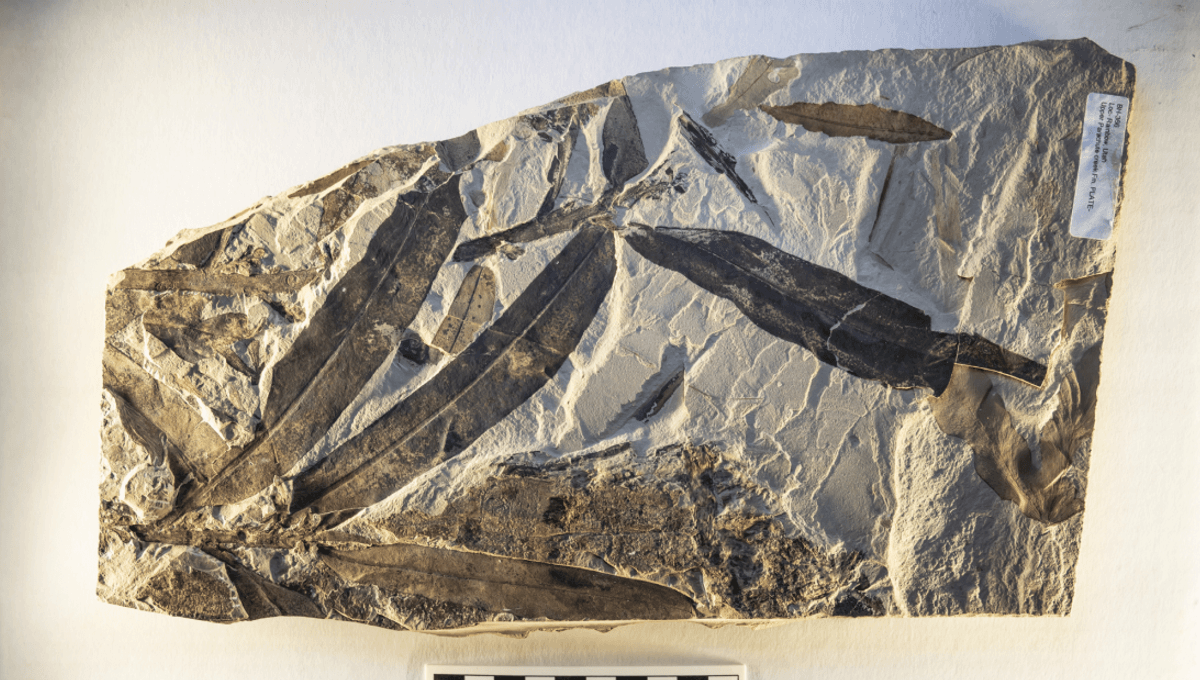
A peculiar cluster of fossils was retrieved from the Green River Formation in Utah back in 1969 – the 47-million-year-old leaves of an “alien plant” that was thought to be an unusual member of the ginseng family. Now, scientists have revisited the specimens with a fresh fossil to boot, revealing that it isn’t ginseng and is actually even stranger than first realized.
The new-to-science species was named Othniophyton elongatum in 1969, based on some fossilized leaves. We keep saying “alien plant” because that’s what its name translates to (othnio = alien, phytum = plant).
A new fossil
One person who is very familiar with the 1969 fossils is Steven Manchester, curator of palaeobotany at the Florida Museum of Natural History. Manchester did a bit of palaeobotany detective work when he encountered an unidentified plant fossil that had also come from the Green River Formation, and as part of a team demonstrated that it was, in fact, the same plant species. It was a big discovery because the leaves, fruits, and flowers on that specimen looked nothing like ginseng, meaning the initial identification of the 1969 fossils was likely incorrect.
“This fossil is rare in having the twig with attached fruits and leaves,” said Manchester in a statement. “Usually those are found separately.”
The detective work continued as they went in search of a living species that could stand up to the peculiar physical features of the old and new fossils. That search proved fruitless, so they looked to extinct plant species and still came up with nothing.
The pitfalls of palaeobotany
The inability to fit Othniophyton into a known family or genus is not a failure, however, but instead a great demonstration of what you come up against in palaeobotany. As Manchester put it, when faced with limited remains of ancient species, “you can’t always shoehorn these things,” but then the team began exploring a new way to examine the fossils’ minute details.
A new microscopy workstation at the Florida Museum, which had been established by the curator of artificial intelligence, was used to take an even closer look at the fossils. The combination of the digital microscope’s powerful lens and a computer-enhanced shadow effect revealed micro-impressions that had been left behind by small seeds.
“Normally we don’t expect to see that preserved in these types of fossils, but maybe we’ve been overlooking it because our equipment didn’t pick up that kind of topographic relief,” Manchester said.
A trait never seen in modern plants
Looking at the plant in this way revealed an unusual feature that hadn’t been recognized before: it still had stamens while bearing fruits. That’s a trait that’s never been seen in any modern plants, where the norm is for the stamen to fall away with the petals once the flower is fertilized.
Even with their extra information, the team still couldn’t find a perfect match for Othniophyton. It has some features that could point to the order Caryophyllales, but its lack of a clear position with respect to extant plant families probably indicates that the lineage went extinct, and perhaps so too did its close relatives.
The palaeobotanical puzzle continues, as there was a book published in 1969 that contains many other similarly mysterious specimens, and we look forward to finding out what the Green River Formation turfs up next.
The study is published in the journal Annals of Botany.
Source Link: “Alien Plant” Identified From 47-Million-Year-Old Fossil Is Even Weirder Than We Thought